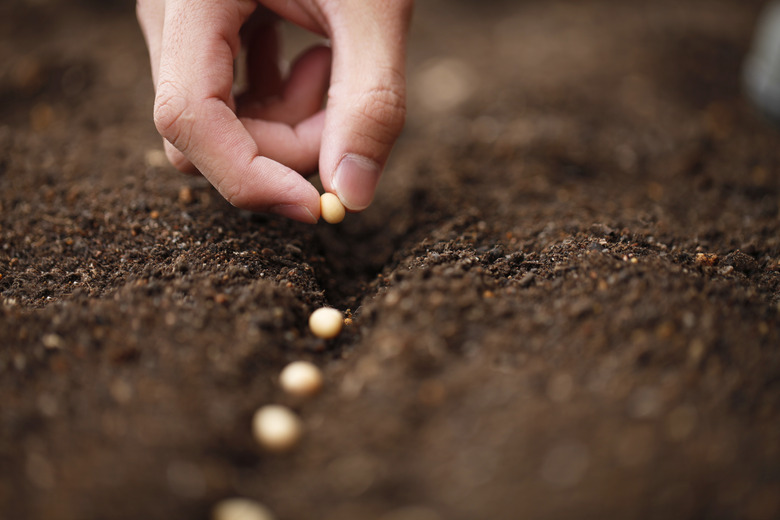What Advantages Do Seeds Have Over Spores?
Seeds and spores are modes of reproduction found in plants, fungi and some bacteria. Not all plants produce seeds as a means of reproduction. Non-flowering plants, such as ferns, reproduce through the use of spores. While both seeds and spores produce the next generation, seeds are a more developed way of reproduction that offers many advantages.
TL;DR (Too Long; Didn't Read)
The seed coat offers protection and nourishment that aren't available for spores. And seed coats contain a fully developed embryo ready to grow, while spores need to undergo a reproduction process before they're ready to grow.
The Seed Coat
The Seed Coat
The seed coat is one major advantage seeds have over spores. A spore is a single-celled organism that develops into a plant or fungus when the conditions are right. The spore has no outer protection. A seed is a multicelled organism with an outer shell that protects the inside from damage, dessication and other adverse conditions.
Nourishment
Nourishment
Each seed contains nourishment for the embryo inside the seed. The endosperm is the tissue that surrounds the embryo inside the seed. The embryo uses nourishment provided by the endosperm as a jump start to begin growing. The spore, being a single-celled organism, does not have any built-in system to help a new plant or fungus begin the growth process.
Fully Developed Embryo
Fully Developed Embryo
Inside each seed is a fully developed embryo that is ready to begin growing. Many seeds go through a dormancy period, which is a period when the seed will not germinate and begin growing. When conditions are right, the embryo germinates and begins growing. Having an embryo already grown gives a seed plant a better chance at survival as opposed to a spore. The single cell of the spore must undergo a cell division and specialization process before the plant or fungus can really begin to grow.
No Water Required
No Water Required
Seeds do not necessarily need water to germinate and grow, although some require water to soften the seed coat. Large seeds in dry conditions will hold water and allow the growing plant to grow deep roots without the need for rain or additional water. However, all spores require water before the spore begins its growing process. If the conditions are not exactly right, the spore will not produce the next generation.
Cite This Article
MLA
Carpenter, Michael E. "What Advantages Do Seeds Have Over Spores?" sciencing.com, https://www.sciencing.com/advantages-do-seeds-over-spores-8447491/. 19 April 2018.
APA
Carpenter, Michael E. (2018, April 19). What Advantages Do Seeds Have Over Spores?. sciencing.com. Retrieved from https://www.sciencing.com/advantages-do-seeds-over-spores-8447491/
Chicago
Carpenter, Michael E. What Advantages Do Seeds Have Over Spores? last modified March 24, 2022. https://www.sciencing.com/advantages-do-seeds-over-spores-8447491/
